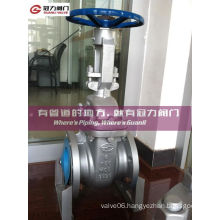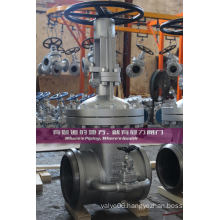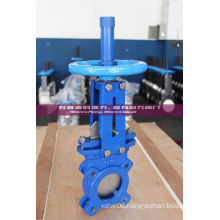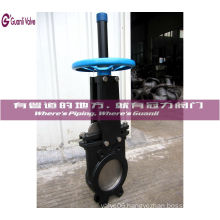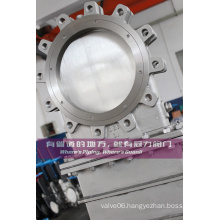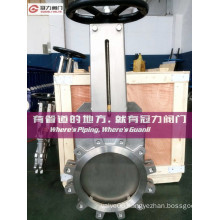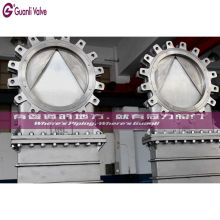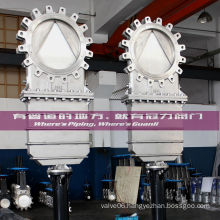"Inkjet coding" refers to a number of related technologies, and we use these techniques to eject very small ink droplets from the nozzles, the ink droplets passing through the air, and finally falling on the surface of the printed material to form a printing pattern. All of these related technologies have the following characteristics: Non-contact: Because only the ink droplets touch the surface of the printed object, both the moving surface and the fragile surface can achieve successful printing. Changed information: The information can be continuously changed, so the time, date, lot number and similar data can be changed online and in real time. Speed: With inkjet coding technology, objects with a travel speed of no more than 6 m/s can be sprayed - this is sufficient for most production processes. Like all things, there may be some technologies that are particularly applicable in specific situations, but in terms of the absolute breadth of the application, inkjet coding technology is still unmatched. The technology needed for inkjet coding is not new. As early as the 19th century, people were able to break the flow of ink into droplets and charge and deflect them. Also, piezoelectric materials have existed for some time, for example, they are used in sonar, cigarette lighters. However, the only factor that really promotes the development of inkjet coding technology is the development of a computer printer that prints the date and lot number (valve inkjet encoder and continuous inkjet encoder) on the product (pulse inkjet encoder) ) The development and application of microprocessors.
Since the 1960s, many amazing technologies have emerged, blossomed, and survived. Today's technology can be divided into three types: valve-type printing, pulse-type printing, and continuous printing. These three major technologies will overlap when applied, and each has its own strengths and weaknesses. To a large extent, it is these strengths and weaknesses that determine their most suitable range of applications. The original intention of this article is to introduce readers to each technology, and then help users choose the best solution for themselves. This method of valve printing is the easiest to implement. In the past 20 years, it has been mainly used in outer packaging. Basically, a valve print apparatus includes a low pressure ink system, an electronically controlled cabinet, and a showerhead attached to the cabinet with a flexible conduit. The ink in the ink system is sent through a simple opening/closing valve to the nozzles in the spray head (a spray head typically has 7 to 18 200 micron diameter nozzles or more). When an ink droplet needs to be ejected, the electronic component opens the corresponding opening/closing valve and the ink droplet is ejected.
Due to the simple mechanical structure, the valve type printing system is easy to establish. Customers typically select suppliers by comparing the user interface (ie, whether the operation is easy), the print capability/print diversity/quality, and the applicable ink series. The print quality of valve printing is not stable. This is because the ink stays in the nozzle until it is ejected. If the ink dries in the Pipe, it will block. The system works best with water-based inks that print on osmotic surfaces. Many valve-type printing system manufacturers produce non-permeable surface inks that dry faster than water-based inks. Blocking occurs and the drying time is still quite long—about 15 to 30 seconds. In general, if the print quality requirements are not high and the nozzles are frequently cleaned, the valve printing system can perform well. Although the cost of acquisition is relatively low, the cost of the use of the valve jet printing system is higher after one or two years, so this technology has gradually been replaced by pulse jet printing technology. Pulsed jet printing The jet printing technology is mainly divided into two types: piezoelectric jet printing and bubble jet printing—the realization of these two technologies is very different. Pulsed inkjet printheads have evolved from the field of office printing - pulsed printing is now widely accepted in the office printing industry and has excellent results. Although pulsed jet printing is conceptually simple, it is worth noting that it was not until the 1970s that some people obtained the initial patent, and although Canon, Hewlett-Packard and Other companies did a lot of research until the 1990s, Cheap and reliable products are put on the market. So pulse printing is not as simple as it seems. There is still a lot to be done in the office to print at a fixed print distance to clean paper and to complete inkjet coding in the harsh environment of the factory. Piezoelectric jet printing First of all, the piezoelectric jet printing technology is piezoelectric printing. Simply put, the ink pressure in the nozzle must be low enough (or negative pressure) because the surface tension of the ink keeps the ink at the nozzle. In the printing process, a pulse voltage is applied to the piezoelectric crystal and the piezoelectric crystal is deformed to reduce the volume of the nozzle ink chamber.
In this way, a drop of ink is ejected from the nozzle. Then, the piezoelectric crystal returns to its original state, and new ink enters the nozzle due to surface tension. By arranging a large number of nozzles side by side, the ideal print width and resolution (typically 8-6 dots/mm) can be achieved. Although the print resolution can be increased by tilting the print head (which sacrifices the print height), the print resolution is fundamentally determined by the nozzle pitch. More sophisticated improvements will allow each piezo crystal to drive more nozzles (say, 8), and 32 piezo crystals will drive 256 nozzles of ink, which will have a larger print range, of course. There are only 32 programmable placement points on the printed surface. Because the system is not continuous, the ink must remain fluid in the nozzle and dry on the printed surface. The inks used in piezoelectric ink jet printing are usually oil-based or paraffin-based. These two types of inks do not dry out in the nozzles, but they can be absorbed by the printing surface. Piezoelectric jet printing also uses some quick-drying inks. Fast-drying inks still take a long time (about 10 seconds) to dry out. When the product needs to be processed quickly and printing is prohibited after the printing, the use of quick-drying ink can cause problems. In order to prevent the ink from drying out in the nozzle, we can also apply a lower pulse voltage to the piezoelectric crystal. This will cause slight disturbance to the ink in the nozzle and the ink in the nozzle will not dry out. This method relies on changes in the ink composition or mechanically more sophisticated improvements. Another method to achieve piezoelectric printing is to heat the print head while using a hot melt ink. In this way, the ink remaining fluid in the nozzle solidifies on the surface of the colder printed object. The piezoelectric print system can achieve good results on many printed surfaces, but it is easily scraped off during touch. In addition to the problem of the ink drying out in the nozzle, another problem that needs attention is that the nozzle is sensitive to vibrations. The vibration can cause the ink to be ejected out of the nozzle and the ink chamber so that the surface tension cannot cause the ink to fill the nozzle. The system must then be restarted. Obviously, the print quality has been affected when vibration problems are discovered.
Bubble jet printing is the newest technology and is still widely used in office space. A voltage is applied to the two terminals. Due to the resistance between the terminals, the ink is heated to form a vapor bubble, and a drop of ink is ejected from the nozzle due to the expansion of the chlorine bubble. When the voltage between the terminals is removed, the air bubbles disappear and a new ink is filled in the nozzles due to surface tension. Like piezo-electric printing technology, a series of nozzles can be arranged together to get a larger print range. The degree of resolution is largely determined by the denseness of the arrangement of the nozzles. The ink characteristics are particularly important for the normal operation of the bubble jet system. In the office, it is possible to control the surface of the printed matter to match it with the ink, but it is completely different in the production environment. For this reason, the impact of bubble jet printing technology in the field of product coding has been limited. However, in the case of bubble jet printing inks, we can get excellent jet printing results. Continuous inkjet continuous inkjet coding has a wide range of applications, it may be the most diverse technology. From the mid-1970s to the end of the 1970s, the early continuous inkjet coding machines were complicated to operate and had frequent failures. This impression still exists, but the situation has changed, just as the car no longer leaks when we drive. The latest continuous inkjet coding system requires only the operator to press the ON/OFF key and perform routine maintenance once a week, and maintains much less maintenance than other ill-fated devices. There are two related but different continuous inkjet coding technologies: deflected jet printing, binary jet printing deflected jet printing.
Deflection printing technology has been commercialized since the early 1970s, and it may be the most developed technology used in the production environment. Although the principle is quite simple, many control circuits have been combined for many years to ensure reliability and ease of use. The ink was applied to the nozzle after pressurization, forming an ink flow of about 20 M/S. There is a piezoelectric device behind the nozzle. When the voltage is applied, the device will generate displacement. This displacement will disturb the ink flow. If the frequency of the electrical signal applied to the piezoelectric device resonates with the ink jet frequency, the ink flow will break into The same size, the same pitch of ink droplets. In the position where the continuous ink flow breaks into a series of ink droplets, there is a charging electrode. If the frequency of the pulse voltage on the charge electrode is the same as the frequency at which the ink stream breaks, each droplet will be charged with the corresponding charge.
The ink drops continue to move past a pair of deflector plates. The voltage on the deflector plate is constant (for example, +/-5KV), forming an electrostatic field. Under the effect of the electrostatic field, the charged ink drops respond to the direction of one of the deflector plates according to the amount of charge they have. The amount of deflection. Finally, the ink droplets pass through the air and land on the surface of the printed object that passes through the print head. The uncharged ink droplets are not deflected and are collected in the recovery tank at the bottom of the spray head and finally recirculated to the nozzle through an ink reservoir. Thus, approximately, the pattern of ink jet printing corresponds to the pulse voltage applied to the charging electrode. The actual process is not so simple. We must synchronize the drop breakage with the charging of the charging pad, we must consider the mutual exclusion between the charged droplets, and even the aerodynamic problems of flying drops. Users of continuous inkjet coding machines do not feel these problems, but it is these problems that make designing continuous inkjet coding machines interesting. Because ink jets are continuous, continuous inkjet printers can use many types of inks, especially those that dries very quickly (within 1 second). Therefore, continuous inkjet coding technology is ideal for printing on non-permeable surfaces such as cans and plastics that need to be processed quickly after printing. In addition, more colorful pigment inks can also be used. Since continuous jet printing has a relatively high jetting speed, the jet printing distance of the continuous jet printing is usually far more than the jet printing distance (generally more than 10 mm), and the jet printing quality does not decrease. The placement of the nozzles allows for a great deal of choice.
The concept of binary jet printing binary continuous jet printing technology is as old as the deflection jet printing technology. This technology was developed toward the high-speed (high-cost), wide-spray printing commercial field in the early days. As technology advances, binary printing will be practical in a very short period of time.
The ink is ejected from a series of closely spaced nozzles. The print resolution is 4-8 dots/mm. The ink flow is broken by the piezoelectric device into ink droplets. The breakage pattern is similar to that of deflection printing (although the binary printing has More ink flow). The ink dots that do not need to be printed are charged, deflected, and then recovered by the recovery tank. The ink dots that need to be printed are not charged and do not deflect. They directly hit the surface of the printed object. In this way, the width of the print pattern is determined by the number of nozzles or the number of ink flows. Of course, we can also use rechargeable ink jet printing to recover the uncharged ink droplets. Binary jet printing is less than offset printing, but it is still much larger than valve printing. In principle, a wide variety of inks for deflected jet printing can be applied to binary jet printing. In the future, whether to use binary printing or offset printing will depend on whether the printing is focused on the number of information lines or the speed and cost. When printing more than three lines of information at the same time, binary printing is undoubtedly faster than deflection printing. However, binary printing is more expensive, and more manual work will be required in early applications—especially when using different heterosexual inks. Basically, binary printing and deflection printing will coexist, because at present, they provide customers with the most diverse and effective solutions in the field of on-line printing.
Reprinted from: Tea Network

